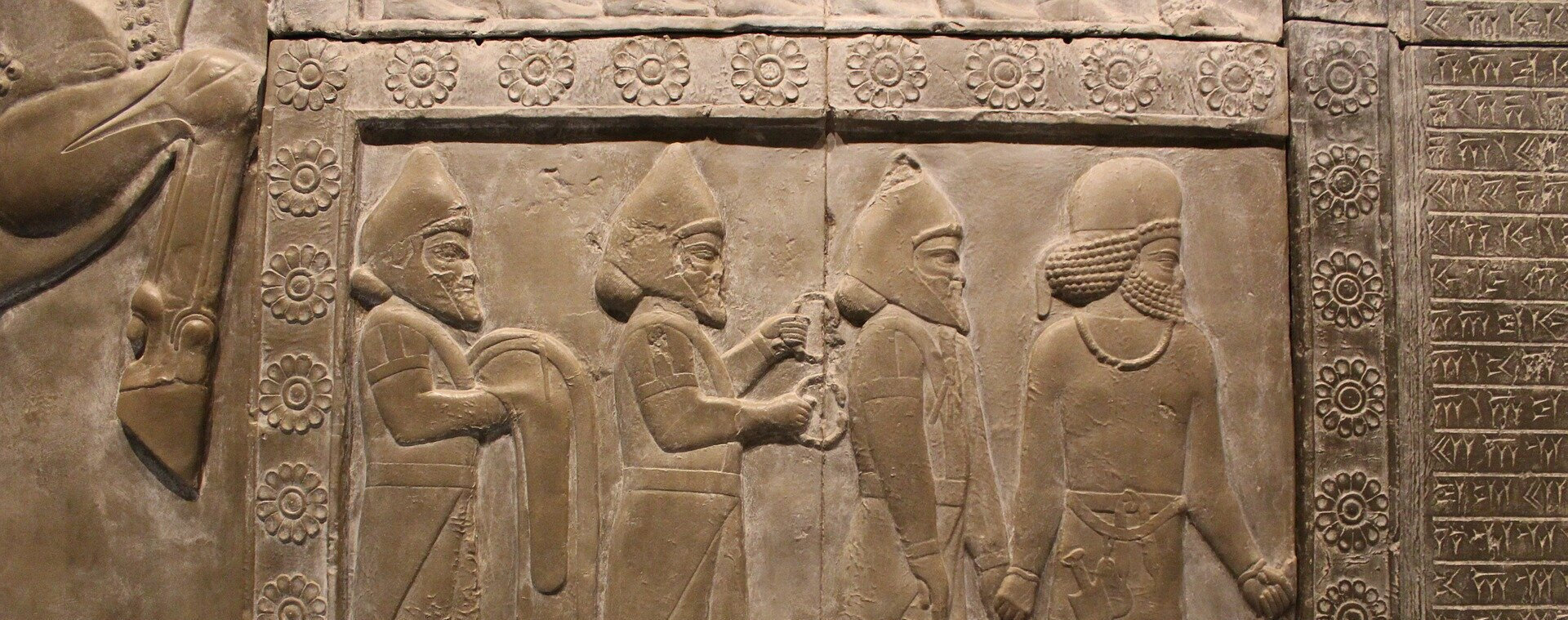A Teaching Outline for the Book of Nahum
For many, the idea that Christ will return to destroy the world is laughable. Even though Scripture clearly describes Him as a warrior who will one day be drenched in the blood of His enemies (cf. Isa. 63:2-3, Rev. 19:13), the concept of a wrathful God who punishes sin is pure fiction in the minds of scoffers. “Where is the promise of His coming?” they say (cf. 2 Pet. 3:4). The world appears to continue on unabated, leaving sinners under the illusion that their own supposed autonomy renders them immune to divine affliction. Similarly, for those in the seventh century BC, the idea that Assyria—one of the most powerful empires in world history—would be brought to its knees was also laughable. Its capital city, Nineveh, boasted an inner wall that measured eight miles in circumference, one hundred feet tall, and wide enough for three side-by-side chariots, containing twelve hundred towers and fourteen gates! The king’s palace was made of the finest cedar, cypress, and alabaster that money could buy, with a great hall that measured forty by one hundred and fifty feet. His fighting force was unparalleled, as indicated by a forty-six-acre armory that took six years to build.
But none of that matters if God is against you. And that was precisely the message of the prophet Nahum, whose name—almost ironically—means “comfort” (cf. Nah. 2:13, 3:5).
Unlike Jonah, who was a messenger of grace to the city of Nineveh one hundred years prior, Nahum was a messenger of judgment. Writing decades before the fall of Nineveh, during the reign of King Manasseh in Judah, Nahum not only predicted the outpouring of God’s wrath upon Assyria, he pronounced it—and for good reason. Assyria was not only an unusually bloodthirsty nation (committing atrocities such as impaling captives, burning women and children in front of their relatives, skinning people alive, and creating monuments out of severed heads), but they went even one step further by attacking the people of God and comparing Yahweh to the garden-variety deities of other nearby nations (cf. 2 Kings 18:31-35). Thus, after Assyria had attacked dozens of cities in Judah, stopped only by God’s miraculous intervention (cf. 2 Kings 19:35), their sins had piled high before the Lord, who would “by no means leave the guilty unpunished” (Nah. 1:3). Using brilliantly descriptive language as he saw into the future (cf. Nah. 2:3-12), Nahum comforted the people of God by writing that Assyria’s destruction would come.
And come it did.
In 612 BC, the Babylonians (and others), clothed in red, marched up the left bank of the Tigris River and surrounded Nineveh, just as Nahum said (cf. Nah. 2:3, Ezek. 23:14). The unusually hard rains that year caused the river to flood and wash away portions of the wall, allowing the enemy soldiers to enter the city through the breach, just as Nahum said (cf. Nah. 2:6). The resultant bloodshed and looting were astronomical, just as Nahum said (cf. Nah. 2:9-10). And though secular historians fail to report it, the destruction of Nineveh was by the hand of God, just as Nahum said (cf. Nah. 3:6-7).
God had warned Assyria, saying, “Behold I am against you” (Nah. 2:13). And it wasn’t an empty threat. Where, then, is Assyria today? Gone. “The Lord has issued a command concerning you: ‘Your name will no longer be perpetuated. I will cut off idol and image from the house of your gods. I will prepare your grave, for you are contemptible” (Nah. 1:14). Furthermore, Nahum stated, “There is no relief for your breakdown, your wound is incurable” (Nah. 3:19a). The wrath of God brings down the mightiest of nations; they are regarded by Him as less than nothing (cf. Isa. 40:17, Dan. 4:35). All will bow to Yahweh—either on bended knee or broken knee (cf. Phil. 2:10-11).
Among the many lessons this prophecy teaches us, we are reminded that God governs even the greatest of world powers, God’s wrath against sin is real, those who hurt God’s people will not get away with it, and past fulfillments of God’s wrath serve as warnings of future fulfillments of God’s wrath. Considering this, the only sane response is to seek refuge in the Lord Jesus Christ. In fact, the words of the apostle Paul provide great comfort to those who have done so, reminding us that if God is for us, it matters not who is against us (cf. Rom. 8:31). Conversely, however, unbelievers ought to recognize just the opposite: if God is against you, it matters not who is for you. Those who scoff at the wrath of God ought to read Nahum’s prophecy and then visit “The Nineveh Gallery” at the British Museum to see what remains of that once majestic city—and what will remain of them if they persist in unbelief.
As you deliver the sober message of this prophecy verse by verse, may God grant you and your hearers not only the eyes to see the wrath that has come, but also the repentance needed to flee the wrath that is to come—by trusting in Christ. The following outline is offered to help.
God’s Wrath Against Assyria Declared (Nahum 1:1-15)
The Principle of God’s Wrath (Nah. 1:1-3a)
The Power of God’s Wrath (Nah. 1:3b-6)
The Promise of God’s Wrath (Nah. 1:7-13)
The Permanence of God’s Wrath (Nah. 1:14-15)
God’s Wrath Against Assyria Described (Nahum 2:1-13)
The Anticipation of Battle (Nah. 2:1-2)
The Attack on Nineveh (Nah. 2:3-5)
The Agony of Defeat (Nah. 2:6-10)
The Announcement from God (Nah. 2:11-13)
God’s Wrath Against Assyria Deserved (Nahum 3:1-19)
Their Sin Incriminated Them (Nah. 3:1-4)
Their Creator Opposed Them (Nah. 3:5-7)
Their Pride Blinded Them (Nah. 3:8-12)
Their Destruction Suited Them (Nah. 3:13-19)

